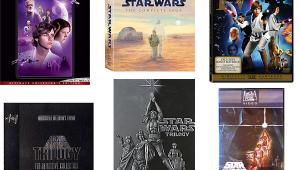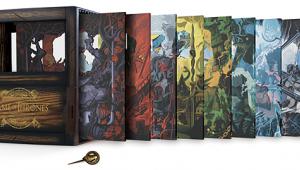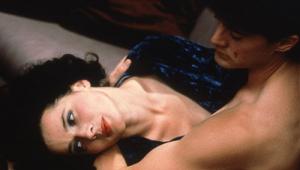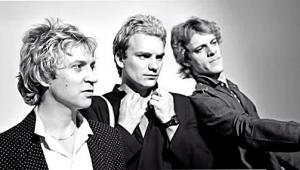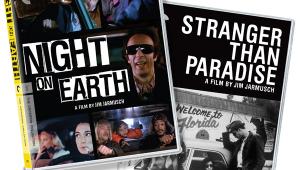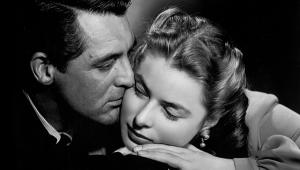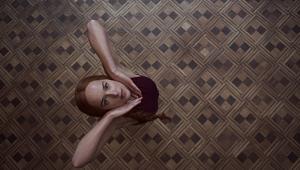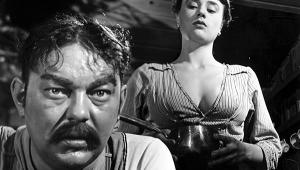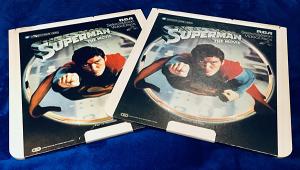Back To The Future: The Complete Trilogy Page 2
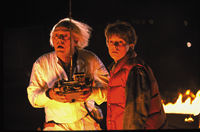 You don't take the trouble to plan this sort of meticulous layering, let alone spend the money on it, unless you absolutely love what you're doing. That the BTTF films were labors of love far better than they ever needed to be is made clear not only where it counts—in the films themselves—but also in this set's 10 hours' worth of extras. Each film has a full-length commentary by producers Neil Canton and (mostly) Bob Gale. These are thorough, engaging, informative; Gale takes particular pleasure in pointing out the continuity glitches and his own failure as a writer to resolve all the temporal paradoxes of these thorny scripts. Each film also has a panel discussion (audio only; it plays over the soundtrack) in which Bob & Bob answer a live audience's questions about the trilogy. There are three documentaries, with some overlap: "The Making of Back to the Future" and "Making the Trilogy" are each in three parts corresponding to the three films. "The Secrets of the BTTF Trilogy" is a cutesy bit of fluff dating from the films' first VHS release. There are also mini-documentaries by Gale on production design, storyboarding, and time travel, and one each on designing the DeLorean, the town of Hill Valley, and the films' marketing campaigns—all informative and interesting.
You don't take the trouble to plan this sort of meticulous layering, let alone spend the money on it, unless you absolutely love what you're doing. That the BTTF films were labors of love far better than they ever needed to be is made clear not only where it counts—in the films themselves—but also in this set's 10 hours' worth of extras. Each film has a full-length commentary by producers Neil Canton and (mostly) Bob Gale. These are thorough, engaging, informative; Gale takes particular pleasure in pointing out the continuity glitches and his own failure as a writer to resolve all the temporal paradoxes of these thorny scripts. Each film also has a panel discussion (audio only; it plays over the soundtrack) in which Bob & Bob answer a live audience's questions about the trilogy. There are three documentaries, with some overlap: "The Making of Back to the Future" and "Making the Trilogy" are each in three parts corresponding to the three films. "The Secrets of the BTTF Trilogy" is a cutesy bit of fluff dating from the films' first VHS release. There are also mini-documentaries by Gale on production design, storyboarding, and time travel, and one each on designing the DeLorean, the town of Hill Valley, and the films' marketing campaigns—all informative and interesting.
The deleted scenes, playable with or without Gale's commentary, are satisfyingly inessential to the films' final cuts. There are also hoverboard and makeup tests, theatrical trailers, some mildly amusing blooper reels, stills from the first few weeks' abortive shooting of BTTF I with Eric Stoltz playing Marty, production archives, excerpts from the original screenplay, DVD-ROM features, FAQs, and dated-looking music videos for Huey Lewis and the News' "The Power of Love" and ZZ Top's "Doubleback," both of which play major roles in the trilogy. Most annoying is the "Did You Know That?" feature: for each film, 150 "fascinating facts, trivia, and mistakes" that pop up onscreen as you watch. I'd prefer a printable list, thanks. The menus and scene selection are too active, too noisy, and overdesigned. But overall, this is a terrific set of special features for what has become a classic trio of unclassifiable films.—RL
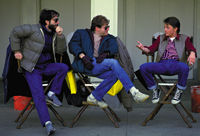 Technical Notes: All three films look and sound good on these DVDs—or at least as good as we're likely to see until we can get them in a hi-def format. The least successful on the video side is III, with a little too much edge enhancement in places. But all three are very sharp and highly detailed—enough to see the terrible makeup used to make the actor playing George McFly look like Crispin Glover in a single medium shot near the end of III, and to clearly see the annoyingly prominent product placements that pepper the films, particularly II and III. The color is fine, though the saturation in II is subtly uneven. A panned&scanned version is also available. Reports that surfaced on the Internet that the widescreen versions of the second and third films have some incorrectly framed scenes have been confirmed by Universal. The errors are not obvious (that is, they don't take you out of the films), unless you know how the image should look. Concerned owners of the trilogy can call (888) 703-0100 to have their early discs replaced with corrected discs.
Technical Notes: All three films look and sound good on these DVDs—or at least as good as we're likely to see until we can get them in a hi-def format. The least successful on the video side is III, with a little too much edge enhancement in places. But all three are very sharp and highly detailed—enough to see the terrible makeup used to make the actor playing George McFly look like Crispin Glover in a single medium shot near the end of III, and to clearly see the annoyingly prominent product placements that pepper the films, particularly II and III. The color is fine, though the saturation in II is subtly uneven. A panned&scanned version is also available. Reports that surfaced on the Internet that the widescreen versions of the second and third films have some incorrectly framed scenes have been confirmed by Universal. The errors are not obvious (that is, they don't take you out of the films), unless you know how the image should look. Concerned owners of the trilogy can call (888) 703-0100 to have their early discs replaced with corrected discs.
The sound is clean throughout, if perhaps a bit too crisp. If you have THX or some other form of cinema EQ in your surround receiver or processor, you might want to switch it in for a more naturally weighted sound, particularly in the slightly zippy-sounding score. The music lacks warmth through the upper bass and midrange in all three films (adding to the treble-prominent balance), though III is noticeably better than I and II. None of the films makes particularly good use of the surround or LFE tracks.
But these minor imperfections may well originate in the original film elements, and none is serious enough to detract in any way from your enjoyment of one of these superb films.—TJN


